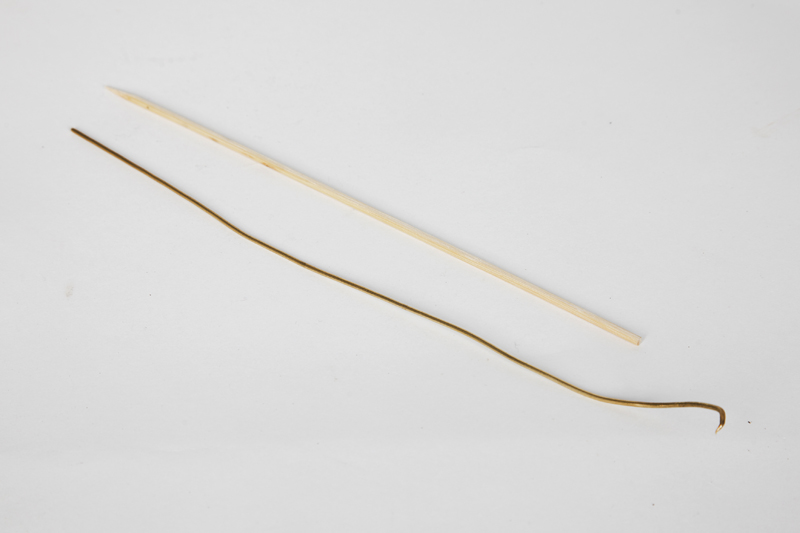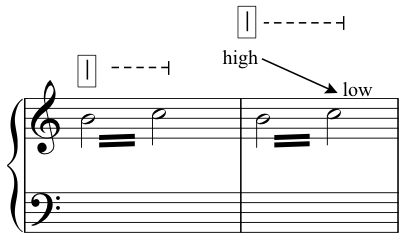Metal/Wooden rod
Thin rods made of metal or wood are mostly used to create tremolos between two strings.

Metal-rod and wooden-rod.
Production
The rod is inserted between two strings and rattled back and forth to produce a tremolo. The rod can of course be used for other effects such as a ricochet on the strings, rattling against a string, hitting the string, a glissando, and so on.
Sound
A tremolo made with a thin metal rod has a nice ring to it. The sound carries well and is stable. Wooden rods produce a somewhat softer sound.
The sound differs according to the thickness of the rod and the material. If the rod is very thick the tremolo will sound exactly like a tuning key tremolo. Thinner rods give a more delicate sound.
The rod can be moved up and down while making the tremolo. The result is a glissando-like change in pitch. See: tuning key tremolo.
Notation
A sign for a metal or wooden rod is placed above or below the tremolo. If the rod should change position in the strings while making the tremolo, the position changes must be indicated above the stave.
Signs should be explained in the legend of the composition.

Tremolo with rod stationary/moving down in strings.
Range
The whole harp.